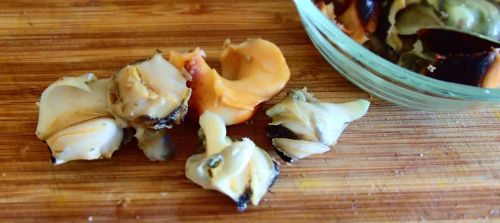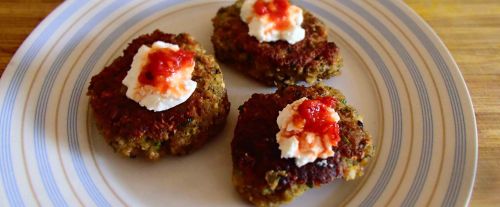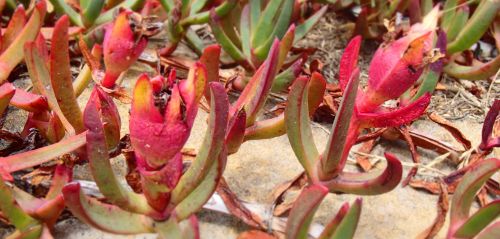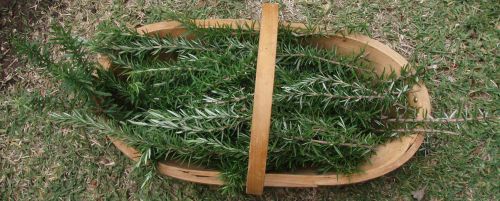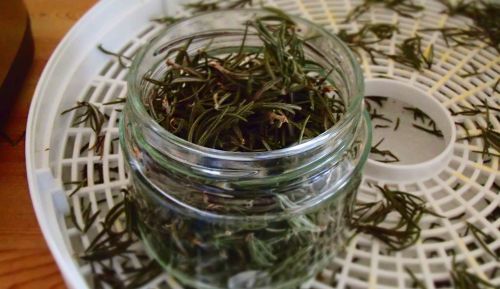Landlessness comes in many forms. It is exists in some parts of the world as the consequence of deplorable near-genocidal atrocity, and in many more as heartbreaking social injustice worth fighting against (see, for example, some of the issues covered by Via Campesina). So let’s be clear that when we talk about Australian urban landlessness for the purpose of almost recreational vegetable growing, we are talking about a relatively minor ‘first world’ middle class inconvenience. In my case, strictly speaking, I’m not even landless (covered in the ‘bush garden’ below).
However, the point is that I live in a rented upstairs flat and have had to get a little creative getting my vegie growing spaces. I’ve got four of them now and that is not including that I would gather just as much again from public and wild places. It’s a kooky kind of version of what permaculture types describe as ‘zonation’, being the location and prioritisation of growing areas where they best suit you, themselves and the landscape. Somewhere in among it all there is probably a solution for anyone in an Australian city wanting to grow, no matter where they live.
The herb garden
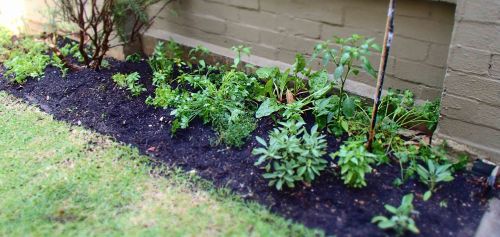
The apartment herb garden
About five years ago the ground around the block of flats was trashed and then turfed with the exception of a thin garden bed along the front wall. The various owners had gotten together and decided on the simplicity of a hedge, and somehow I was lucky enough to catch them time with a plea to let the tenants grow. In went the herb garden. With four one bedroom flats in the building, each successive tenant has simply been told to help themselves and do some growing if they feel like it. Two of us feel like it and it all works pretty well. This is the garden for the stuff you pop out from the kitchen for rather than any bulk harvested crop (except for drying large amounts when a major herb pruning or chilli surplus occurs).
Currently growing: Parsley, sage, rosemary and thyme, chilies, lovage, basil, sorrel, chives, rocket, Chinese cabbage, bay, kaffir lime
The allotment

Allotment
We joined the Randwick Community Organic Garden five or six years ago; back when there was only a few month wait for an allotment. We pitch in with the communal work of it and I go along most weeks on my day with the Boy, even if only to water, watch him watch the chooks and do a little light work befitting a three year old’s attention span. The intention is to grow a few vegetables that don’t take too much regular care, or need harvesting at a perfect point of ripeness we are just as likely to miss, and which might come home in relative bulk for freezing, pickling, drying or gorging upon.
Currently growing: Tuscan kale, beetroot, rhubarb, asparagus, ginger, yacon, jeruslaem artichoke, globe artichoke, watermelon (the amaranthus in the picture now gone)
The office salad garden

Office salad garden – before

Office salad garden – recently
Earlier this year I moved into an office with a garden, albeit grown over and more used for storage. So a few of us got together in it one Saturday for a blitz, and there it was – an office salad garden. This garden works perhaps best of all of them in terms of production, especially with a good regular succession of lettuce and the tomatoes starting to come on. And it functions very well as a communal effort; while I may do most of the work, the fruits are shared with people I work with. We turn up each day and are in it together, so if I am keeping up the planting succession while someone else is keeping up the scheduling of my projects, it would be hard to pick out a salad eating non-gardener as a slacker or sponge. A work place is certainly a better place when you can bring nothing more than some bread and still know a tasty, healthy lunch in a garden is at your fingertips. Everything growing in the garden is something that can be eaten fresh and raw in a lunch.
Currently growing: Cos lettuce, oak leaf lettuce, rocket, cherry tomatoes, roma tomatoes, cucumber, parsley, cress, chives, radicchio.
The bush garden

The bush garden
Putting the lie to any suggestion that I am personally landless (the half that isn’t the bank’s), is a block of rough mountain scrub three hours away with a one-room cabin that feels in many ways more like home than where I usually live. The land is so poor that it affords us the great luxury of precious few land management chores; the sort of land that locally adapted plants win on over ‘weeds’ with little intervention. So for a garden, just a tiny plot for greens and herbs to freshen up meals on extended stays, we built a box (with rocks and split logs) and left the rest of the wildness to itself (scattered trees excepted). And then we didn’t just fence it, we caged it – steel reinforcing mesh that is yet to be bolstered with chook wire – the sort of cage that needs to keep out wallabies, roos, wombats, feral goats, feral pigs and rabbits (birds, possums and rats we’ll have to see about). We still have an irrigation issue (when we aren’t there) to resolve but have put it next to the roof-fed tank with plans of some timer-based drip irrigation and some thoughts on ollas (unglazed clay pots that wick water into garden beds).
Currently growing: Only just planted, with sage, thyme, parsley and kale. Seeded with watermelon and rockmelon, but only with an experimental amount of expectation.
Read Full Post »

